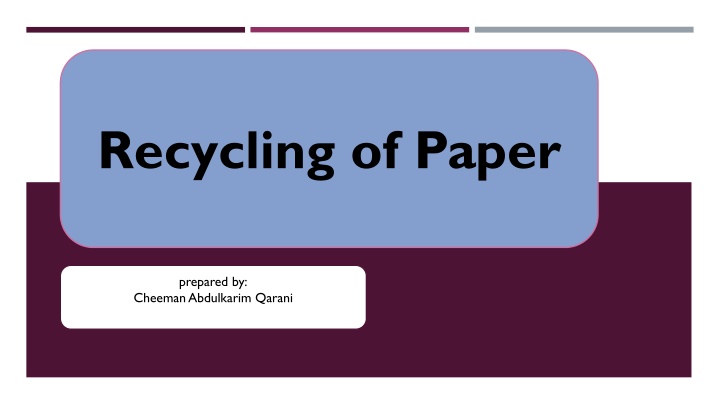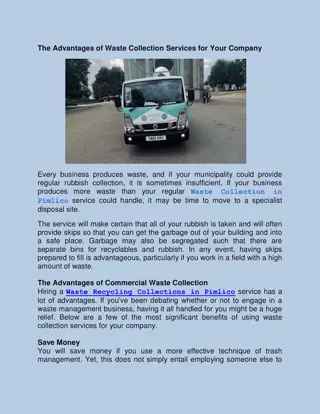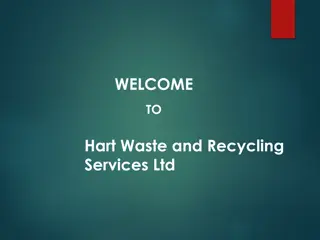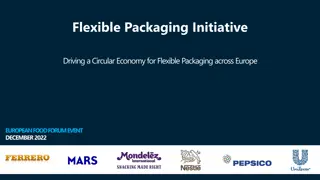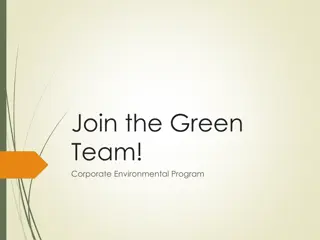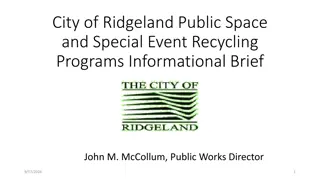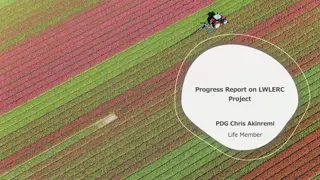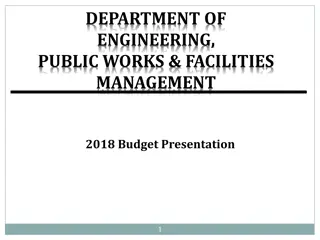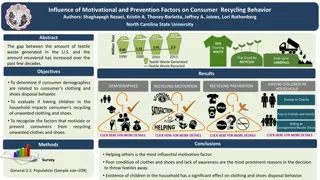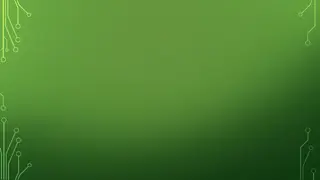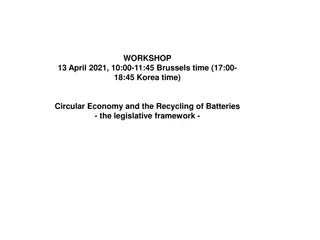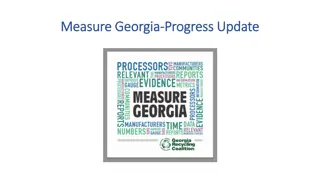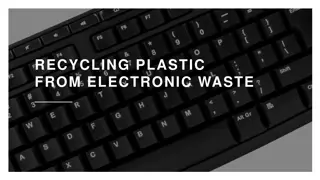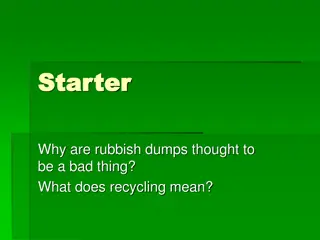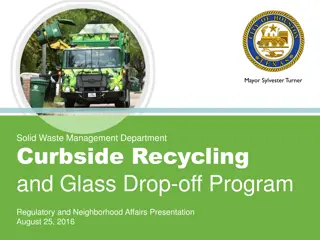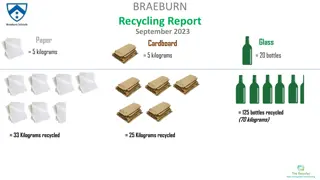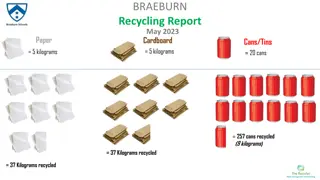Importance of Paper Recycling - Benefits, Process, and Steps
Paper recycling is crucial to reduce tree cutting and save the environment. Learn about the benefits, process, and steps involved in recycling paper to contribute to a sustainable future.
Uploaded on Mar 09, 2025 | 0 Views
Download Presentation

Please find below an Image/Link to download the presentation.
The content on the website is provided AS IS for your information and personal use only. It may not be sold, licensed, or shared on other websites without obtaining consent from the author.If you encounter any issues during the download, it is possible that the publisher has removed the file from their server.
You are allowed to download the files provided on this website for personal or commercial use, subject to the condition that they are used lawfully. All files are the property of their respective owners.
The content on the website is provided AS IS for your information and personal use only. It may not be sold, licensed, or shared on other websites without obtaining consent from the author.
E N D
Presentation Transcript
Recycling of Paper prepared by: Cheeman Abdulkarim Qarani
Why Should we Recycle Paper?? Papers are valuable products made from green source which is decreasing day by day. To make a ton of paper 17 trees have to be cut down. Wasting paper or using more paper means cutting down more trees which can lead to deforestation. Thus, we should recycle paper.
Benefits of Recycling Paper Recycling newspaper saves 14% of landfill space Recycling one ton of paper can save 17 trees Reduces sulfur dioxide emissions Most paper can be recycled up to 8 times to create new products Saves energy
The Paper Recycling Process Before we get into the recycling process, it s important to note what type of paper products can be recycled at paper mills. These products include (but are not limited to): Copy paper Envelopes Newspapers Phone books Notebooks Catalogs Magazines Receipts
Step 1: Collection The first step of paper recycling is collecting discarded paper to send to recycling facilities. We put paper into a separate recycling bin to keep it away from other waste products contaminated paper, such as paper soiled with food, grease, or harmful chemicals, cannot be recycled and will be diverted to a landfill.
Step 2: Transportation and Sorting With the paper placed in the proper bin, a waste and recycling hauler will come to collect your paper and transport it to a materials recovery facility (MRF) to be sorted. At the MRF, the paper is measured and sorted into separate categories, as certain paper products will be processed differently depending on type. For instance, glossy magazine paper will be treated differently than a standard piece of printer paper, so they need to be sorted separately.
Step 3: Shredding and Pulping After the paper has been sorted and checked for contaminants, it is baled together and sent to a paper mill, where the recycling process truly begins. At the paper mill, paper is shredded down into small scraps. Large amounts of water and chemicals, like hydrogen peroxide, sodium hydroxide, and sodium silicate, are added to the shreds to further break down the paper into separate paper fibers. The result is a mushy concoction known as pulp, the raw material that is used to make recycled paper. (This process is known as pulping.) Larger contaminants, such as paperclips, staples, and tape, are screened for and removed from the pulp before it moves on to the next step.
Step 4: De-Inking Once the large contaminants have been removed, the pulp is put into a large floatation tank with more chemicals and air bubbles. The chemicals and air bubbles help remove dyes and inks from the pulp, enhancing the purity and whiteness of the pulp. Dyes can also be added during this process to create colored paper. The pulp, which is approximately 99 percent water to one percent fiber at this point, is then transferred to a paper machine.
Step 5: Drying This is the final step in the paper recycling process. Once the pulp has been de-inked, it s passed through massive rollers to squeeze out excess water from the mixture. Once the moisture has been removed, the pulp is sent through heated rollers to form long rolls of continuous sheets of paper. From there, the rolls of paper are sent to various manufacturers to be produced into paper products.
